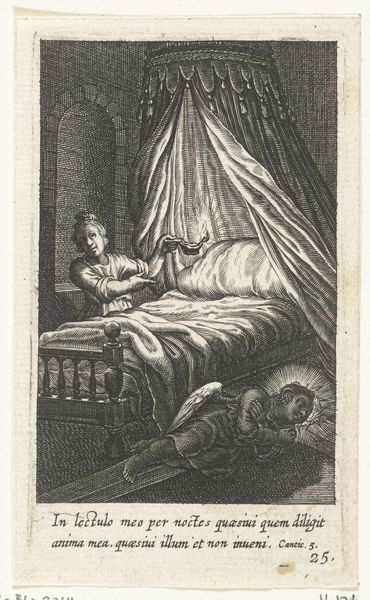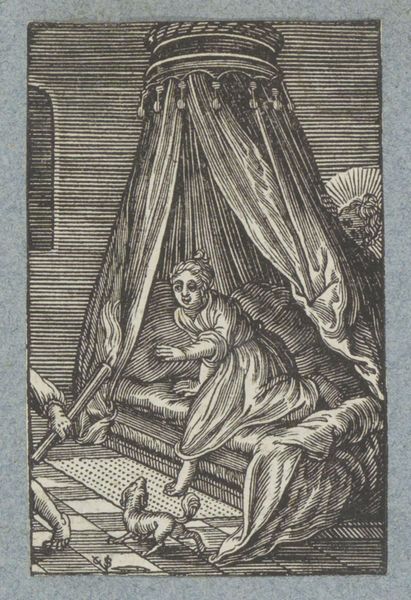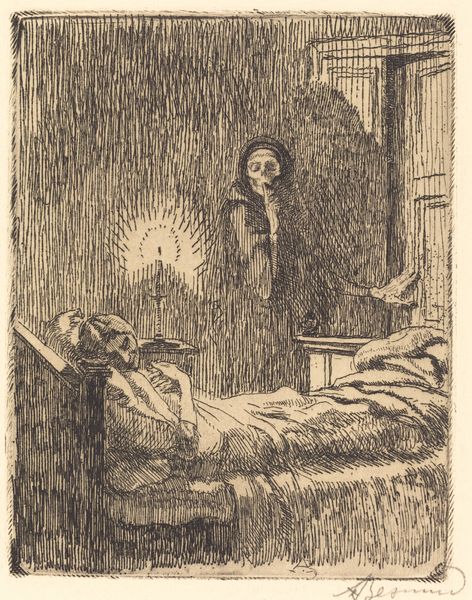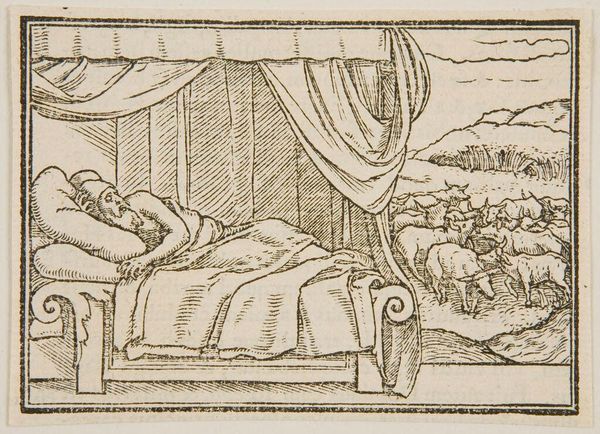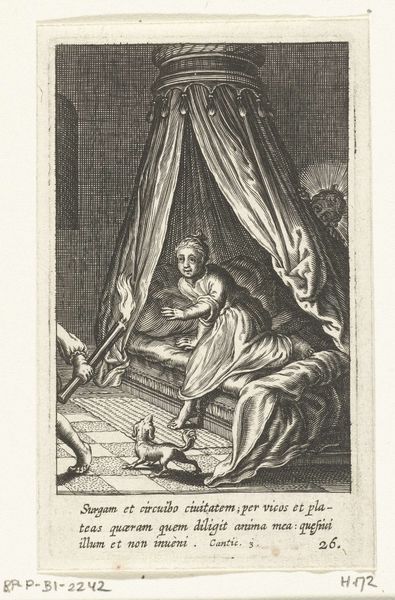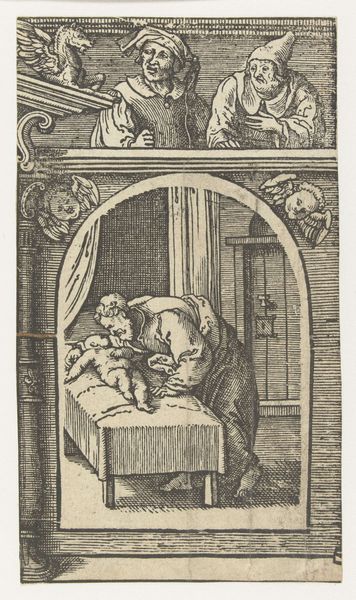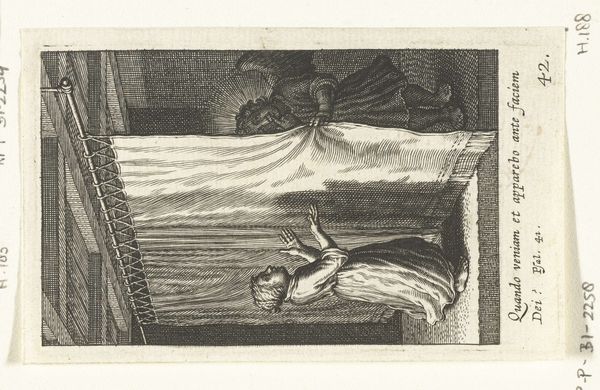
print, engraving
#
narrative-art
#
baroque
# print
#
figuration
#
line
#
engraving
Dimensions: height 83 mm, width 54 mm
Copyright: Rijks Museum: Open Domain
Curator: Here we have “Sleeping Angel Beside a Child’s Bed” by Christoffel van Sichem II, made around 1628. It’s currently housed here at the Rijksmuseum. Editor: Wow, it feels…intimate, almost claustrophobic. All those incredibly precise lines create such a textured density. It’s like a dream captured with a very sharp needle. Curator: That precision comes from the engraving technique, a hallmark of Baroque printmaking. Consider how line, as a visual element, communicates cultural and religious ideas at the time. Editor: Definitely. It reminds me how fragile children used to be seen, I suppose still are in some places, needing constant divine supervision to get past their vulnerable youth and its constant threats of peril. Curator: Yes, images like these were meant to emphasize the ever-presence of the divine in daily life, an idea perpetuated through widespread print distribution, which itself reveals a sophisticated market system that reached varied audiences, from commoners to clergy. Editor: The canopy bed looming over the child, that sleeping angel huddled on the floor like an exhausted parent…It's quite a strong sense of the unseen forces acting to keep this young being safe. Curator: Note that while seemingly benevolent, this protection narrative further entrenches religious institutions' role in societal structures. It visually propagates theological dogma about destiny and afterlife. Editor: You are totally right. Though seeing it that way pulls some of the poetry from the piece, but necessary, of course. I think in our own era, images like these tend to exist more purely as sentimentality... maybe with some nostalgia thrown in. Curator: The sentimental angle wasn't always so... central, shall we say. But it demonstrates how images morph and are reassigned within culture and collective meaning. Editor: A poignant snapshot frozen for a few centuries. Now it leaves us to ponder protection, sleep, and old anxieties. Curator: And how they have become entangled within the sociopolitical framework over the past 400 years.
Comments
No comments
Be the first to comment and join the conversation on the ultimate creative platform.
